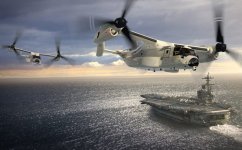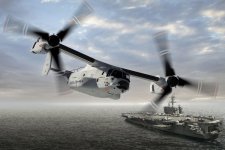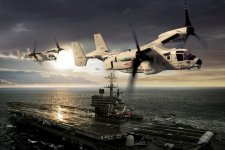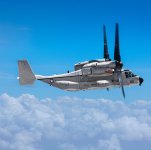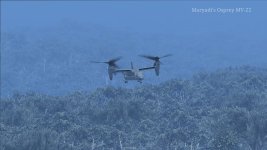Well, Rob, it is actually pretty easy.
The V-22s are rather big aircraft for this tanker role. Previous aircraft have been S-3s and KA-6s. And think of all the other body-body-refuelers, like Tornados, F-18s, or even Etendards. From a military perspective all that makes a lot of sense and is regarded with the highest priority! You can loose a lot of airplanes, if you don't have those tankers airborne in time when you need them. I can tell you from my flying time in Naval Aviation that the whole base would go haywire if the tankers seemed not to be airborne in time.
Body-body-refueling is not normally used to allow for long-range missions as such, but rather to help other fighters get out or - probably even more important - to get back home.
Take the MV-22, it can take-off from carriers that previously had no refueling capability at all. AV-8B cannot do body-body-refueling themselves (that apparently changed with the F-35, but it is a question whether you can spare a high value strike asset to play the tanker role) and they have a limited take-off weight when flying off a deck. They also use a lot of fuel for take-off and climb. So it makes a lot of sense to top them up, before they begin their mission.
And, of course, it is a great reassurance when you come home with your jet and you quite literary run on fumes, to be able to top off again before attempting to land on a pitching deck under quite challenging weather and sea conditions. Mind you that military fast jets don't plan flights like civil airliners with alternates, holding fuel and extra contingencies. They regularly reach Bingo fuel. And if you do that on a angle-deck carrier, you might not be able to catch a wire. Can you see the stress building, not getting the trap, now getting really low on fuel, no alternate to divert to, being faced with the decision to try one last time and then eject, if it doesn't work? And then you throw away a multi-million-dollar fighter and you only have so many of them. And for the Harriers and F-35Bs, hovering or vertical landing uses a lot of fuel again.
That's why you want tankers around. All major carriers always have tankers airborne when they are in recovery operations. There is simply no need to completely fill up fighters when they are empty, but just to give them the extra miles they need to get safely home. Best, obviously, if you don't have to use one of your fighters for it, but a transport - not involved in the attack mission - could do it.
So, it would be great if we could get the tanker in the next release. For the military (both Navy and Marines here) it is a very valuable modifcation to an already very versatile aircraft!
Best regards,
Seawing

